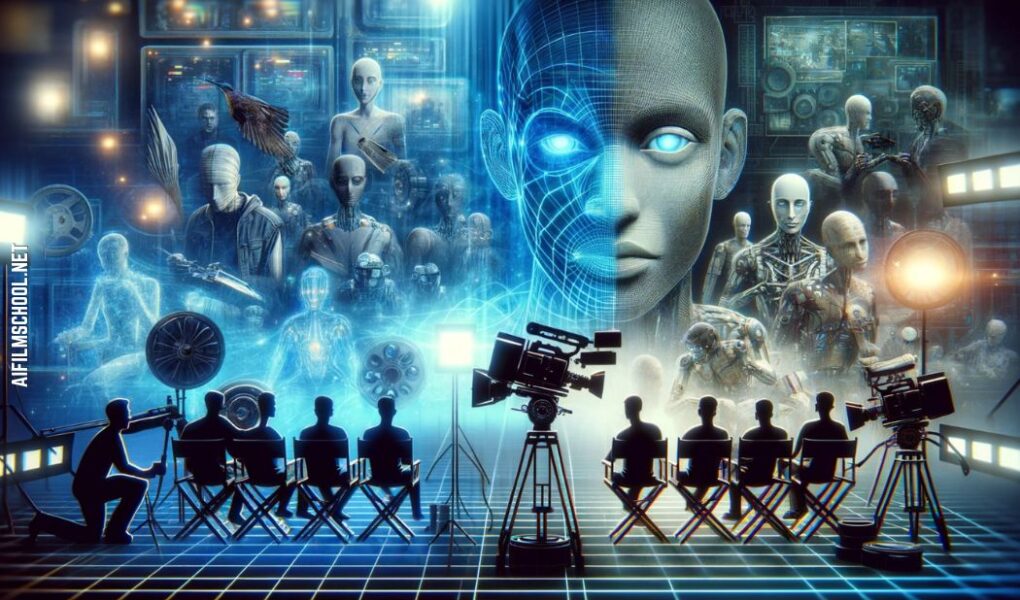A groundbreaking phenomenon is reshaping the casting process: the rise of virtual actors and deepfakes.
This blog post delves into the intricacies of this transformation, examining its implications, challenges, and potential future.
What Are Virtual Actors and Deepfakes?
Virtual actors are computer-generated characters, meticulously designed to look and act like real humans. Using advanced CGI (Computer Generated Imagery), these virtual personas can be programmed to perform any action, emote in various ways, and even interact with real actors.
Deepfakes, on the other hand, are a product of AI-driven technology that combines deep learning and fake media. This technique allows the creation of realistic-looking videos by superimposing existing images and videos onto source images or videos. Deepfakes are becoming increasingly sophisticated, making it hard to distinguish them from real footage.
The Impact on Film Casting
The integration of virtual actors and deepfakes into film casting is a game-changer. It opens up endless possibilities, from bringing deceased actors back to the screen to creating entirely new, hyper-realistic characters.
Here are some key impacts:
Broadening the Talent Pool
- Resurrection of Icons: Virtual actors allow the resurrection of iconic stars for new roles, offering audiences a chance to see their favourite legends on screen again.
- Global Talent Access: Filmmakers can cast virtual actors resembling talents from any part of the world, breaking geographical and linguistic barriers.
Enhancing Storytelling
- Unrestricted Narratives: With virtual actors, films can explore narratives that would be impossible or impractical with human actors, like realistic depictions of historical figures or fantastical creatures.
- Consistency Across Sequels: Virtual actors maintain their appearance over time, enabling consistent casting for sequels and series, even over long intervals.
Changing the Role of Actors
- New Skills for Actors: Actors might need to adapt by focusing on voice acting and motion capture performances for CGI characters.
- Hybrid Roles: There could be a rise in roles where actors partially perform a role that is later enhanced or altered through deepfake technology.
Impact on Casting Processes
- Casting Flexibility: Directors can experiment with different looks or styles for a character without the limitations of physical casting.
- Speeding Up Casting: Virtual casting could significantly reduce the time and resources spent on traditional casting processes.
Economic Implications
- Budget Reallocation: While virtual actors might reduce costs in some areas (like actor salaries), budgets might be reallocated to more advanced technology and skilled personnel in CGI and AI.
- Monetization of Likeness: Issues surrounding the monetization of an actor’s likeness, especially posthumously, could lead to new economic models in the industry.
Audience Reception
- Viewer Adaptation: Audiences might need time to adapt to films where key characters are not real actors but virtual creations.
- Authenticity in Performance: There might be debates about what constitutes a ‘performance’ and whether virtual actors can truly replicate the emotional depth of human actors.
Film Aesthetics
- Visual Style: The use of virtual actors could lead to new aesthetic styles in filmmaking, as directors experiment with blending reality and CGI.
- Realism vs. Artifice: The balance between realism and artifice will become a crucial artistic consideration, influencing how films are received critically.
In summary, the use of virtual actors and deepfakes in film casting opens up a new realm of possibilities for filmmakers, actors, and audiences alike. It challenges traditional norms and practices, offering innovative ways to tell stories and create cinematic experiences.
However, it also brings up complex ethical, legal, and artistic questions that the industry will need to address as this technology becomes more prevalent.
Challenges and Concerns
Despite the advantages, the rise of virtual actors and deepfakes in casting also presents significant challenges:
Technical Limitations
- Uncanny Valley: There’s often a discomforting feeling when a CGI character is almost, but not quite, lifelike.
- High Costs of Technology: Developing high-quality virtual actors and deepfakes requires significant investment in advanced technology and skilled personnel.
Ethical and Legal Issues
- Misuse and Disinformation: Deepfakes can be used to create fake news or malicious content, misleading the audience.
- Intellectual Property: The legalities surrounding the use of someone’s likeness and the ownership of these digital creations are complex and largely unsettled.
The Future of Casting
Looking forward, the integration of virtual actors and deepfakes in film casting is likely to continue growing. Here’s what we might expect:
Advancements in Technology
- More Realistic Virtual Actors: As technology evolves, virtual actors will become increasingly lifelike and emotionally expressive.
- Better Regulation and Detection: Improved methods to detect deepfakes and regulate their use responsibly.
Industry Adaptation
- New Job Opportunities: This shift could create new roles in CGI, AI development, and ethical oversight.
- Blended Casting: A future where virtual actors and real actors coexist seamlessly in films.
Ethical and Artistic Balance
- Setting Industry Standards: The film industry will need to establish guidelines for the ethical use of virtual actors and deepfakes.
- Maintaining Artistic Integrity: Balancing technological innovation with the art of genuine human performance.
Conclusion
The emergence of virtual actors and deepfakes represents a seismic shift in the world of film casting.
While it offers exciting possibilities, it also necessitates careful consideration of ethical, legal, and artistic implications.
As we embrace this new era, it’s crucial to navigate these changes thoughtfully, ensuring that technology enhances the art of filmmaking without compromising its integrity.



